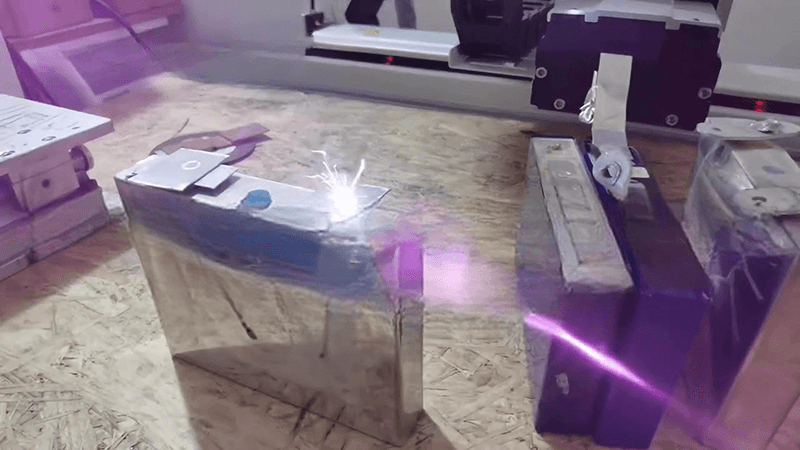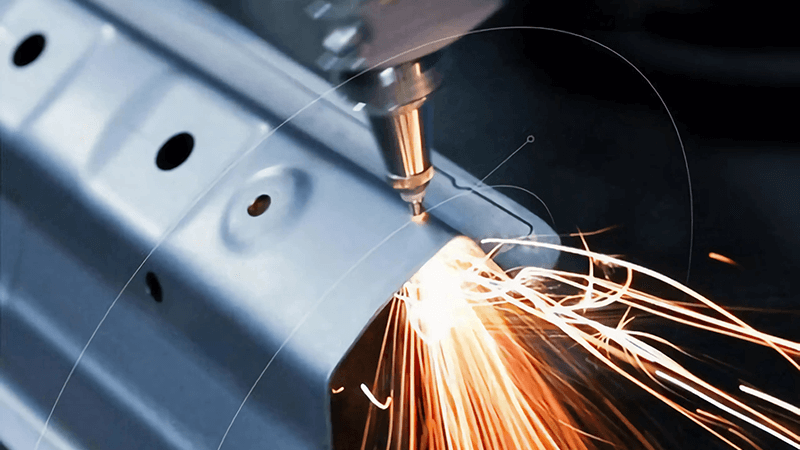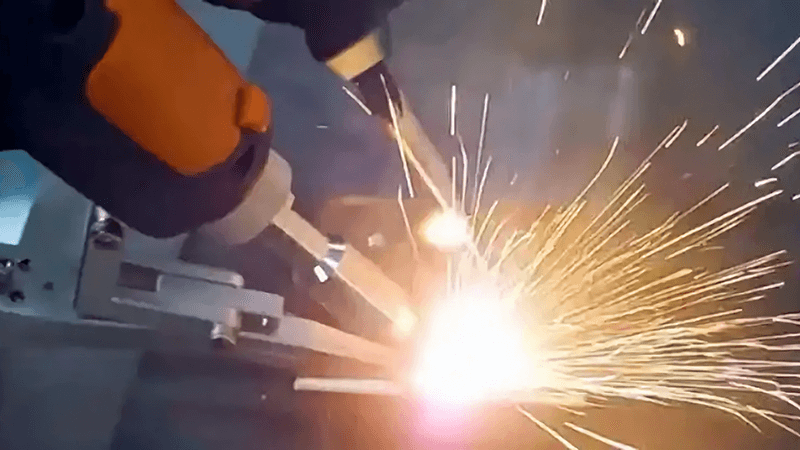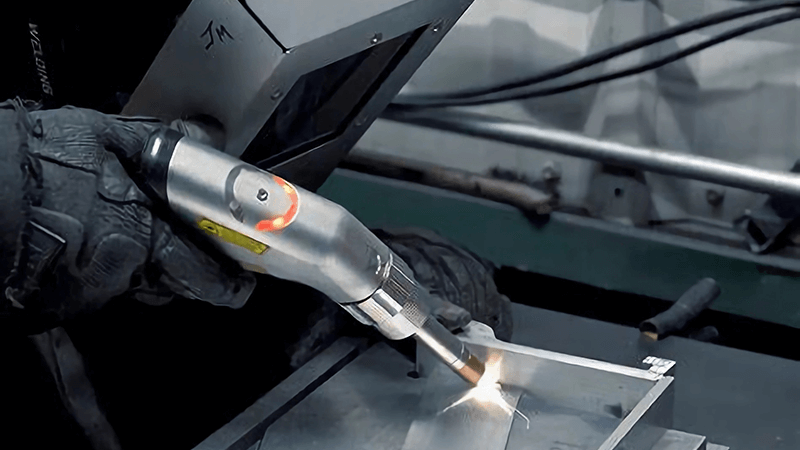If you’re tired of post-weld cleanup, high rejection rates, or slow production cycles, it might be time to rethink how you weld.
Laser welding machines offer precise, fast, and low-distortion welding that consistently outperforms TIG and MIG—especially for high-spec or high-volume applications.
Welding is evolving. I’ve worked with manufacturers across industries—from aerospace to kitchenware—and I’ve seen the shift firsthand. The companies winning today aren’t stuck in the past. They’ve moved on from traditional arc welding to fiber laser welding because it’s faster, cleaner, and simply more effective. So why haven’t you?

Is laser welding good for beginners?
When I first introduced fiber laser welding systems to small shops, the biggest concern was always the same: “Can my operators handle this?” The answer is yes—and here’s why.
Laser welding is beginner-friendly due to its ease of control, minimal heat input, and simple training curve. Even novice operators can produce clean, deep welds with less effort and fewer errors.
Why it's easier than it looks
I’ve trained technicians with no prior laser experience. What used to take weeks of TIG finesse now takes hours. Here's how fiber laser welding1 smooths the learning curve:
🔹 Real-Time Guidance
Many of Kirin Laser's welding systems come with auto-focus heads, onboard monitoring, and user-friendly touch interfaces. Operators can see what’s happening and make real-time adjustments2—something nearly impossible with arc welding.
🔹 Less Room for Error
Traditional methods like TIG and MIG rely on perfect torch angle, arc length, and hand coordination. Fiber laser welding is more forgiving. The narrow beam and high energy density do most of the precision work, minimizing human error.
🔹 Lower Thermal Input
Less heat means less warping and fewer post-process headaches. That’s one less thing a beginner has to worry about.
| Feature | TIG Welding | MIG Welding | Fiber Laser Welding |
|---|---|---|---|
| Skill Level Required | High | Moderate | Low to Moderate |
| Setup Time | Long | Medium | Short |
| Training Time | Weeks | Days | Hours |
| Weld Quality (Newbie) | Inconsistent | Acceptable | Clean and Uniform |
It’s not just user-friendly. It’s user-empowering. I’ve watched junior welders beat veterans—just because they had better tools.

Is laser welding better than arc welding?
I’ve worked with both. But when I saw a client in automotive cut their rework by 60% after switching to our fiber laser system, I stopped calling it a debate.
Yes, laser welding is superior to arc welding in speed, precision, automation potential, and thermal control. It minimizes distortion and delivers cleaner results with less labor.
The comparison that matters
Let’s break it down in terms of what actually affects your bottom line:
🔹 Throughput
Fiber lasers can weld up to 4X faster than TIG or MIG3. That means more units per shift—and less overtime.
🔹 Weld Quality
Lasers deliver deep penetration with minimal spatter. No more grinding, no need for cleanup. TIG might get close in the hands of a master, but why depend on that?
🔹 Repeatability
In mass production, repeatability is everything. Laser parameters are digitally controlled. That means every weld looks just like the last one. Perfect for industries like medical, aerospace, and electronics.
| Performance Factor | Arc Welding (TIG/MIG) | Laser Welding |
|---|---|---|
| Speed | Slow to Moderate | Fast (2x–4x faster) |
| Precision | Operator-dependent | High, digitally controlled |
| Post-weld Cleanup | Often required | Minimal |
| Heat Affected Zone | Large | Very Small |
| Automation Ready | Limited | Fully Compatible |
I’ve seen production lines transform after switching to fiber laser welding4. It's not just better—it redefines what “better” means.

Which type of welding machine is the best?
Every welding method has its place. But if I had to choose one machine to build a future-proof shop, I’d go fiber laser every time.
Fiber laser welding machines stand out for their precision, speed, and versatility—making them the best overall choice for both industrial applications and high-precision manufacturing.
Why fiber laser beats the rest
Let’s take a hard look at your options.
🔹 Stick Welding (SMAW)
Cheap, but messy. Good for field repairs but terrible for production work.
🔹 MIG Welding (GMAW)
Faster than TIG, but needs a clean environment and still causes lots of spatter. Not ideal for precision work.
🔹 TIG Welding (GTAW)
Great for clean, strong welds on thin metals—but slow and skill-intensive.
🔹 Fiber Laser Welding
Clean, fast, and precise. Works on stainless, aluminum, copper, and even reflective materials. Easily automated. Ideal for modern industrial workflows.
| Welding Type | Speed | Precision | Maintenance | Automation | Ideal Use Case |
|---|---|---|---|---|---|
| Stick (SMAW) | Low | Low | Low | No | Field repairs |
| MIG (GMAW) | Medium | Medium | Medium | Limited | Automotive, Construction |
| TIG (GTAW) | Low | High | High | Difficult | Aerospace, Food Equipment |
| Fiber Laser Welding5 | High | Very High | Low | Easy | Precision manufacturing |
The best part? Kirin Laser systems6 are modular. You can start small and scale up. From manual hand-held welders to fully automated robotic cells, we offer options to grow with you.

Can laser welders weld thick metal?
This question comes up a lot. And it's valid. People assume lasers are only for fine work. That’s outdated thinking.
Yes, fiber laser welders can weld thick metal—up to 6mm with a single pass, and much thicker with proper joint prep or multiple passes. It depends on laser power and beam delivery.
Not just for thin sheets
One of our clients in structural steel came to us skeptical. They were used to MIG. But they needed cleaner seams and faster joints on 5mm stainless.
We paired them with a 3kW Kirin Laser system using high-speed wobble welding7. Results? Seam strength exceeded MIG, and finish quality needed zero post-process.
🔹 Power Matters
Higher wattage (2kW–6kW) enables deep penetration. With pulse or wobble modes, you control the heat input precisely—preventing burn-through or lack of fusion.
🔹 Joint Design
For thicker materials, V-grooves or bevel joints help with weld depth. Laser welding can be programmed to fill gaps, as long as they’re within tolerance.
🔹 Preheat and Multi-pass
With proper edge prep and preheat (in certain alloys), we’ve achieved successful welds on 10mm+ steel, especially in robotics or automation setups.
| Thickness (mm) | Laser Power Needed | Joint Type | Notes |
|---|---|---|---|
| 1–3 mm | 1000–1500W | Butt or lap | Single pass, no prep needed |
| 3–6 mm | 2000–3000W | Bevel or fillet | Wobble recommended |
| 6–10 mm | 3000W+ | Bevel, multi-pass | Preheat and fill techniques |
Don’t assume lasers are just for electronics. Today’s fiber laser tech8 is powerful enough for serious metalwork—and flexible enough for small or large shops.

Conclusion
Laser welding9 isn’t just an upgrade—it’s a transformation. Whether you’re dealing with tight tolerances, volume production, or tough materials, fiber laser welding delivers results that traditional methods can’t match. It’s beginner-friendly, scalable, and powerful enough for thick metal. At Kirin Laser, we build machines that make it easy to switch—and impossible to go back.
-
Explore the advantages of fiber laser welding to understand how it can enhance efficiency and precision in your projects. ↩
-
Learn how real-time adjustments can significantly enhance welding quality and reduce errors, making the process more efficient. ↩
-
Understanding TIG and MIG welding differences helps you appreciate why fiber lasers outperform them in speed and precision. ↩
-
Discover how fiber laser welding can enhance speed, precision, and automation in your production line, transforming efficiency and quality. ↩
-
Discover the benefits of Fiber Laser Welding, including speed and precision, to enhance your manufacturing processes. ↩
-
Explore Kirin Laser systems to understand their modularity and scalability for your welding needs. ↩
-
Explore this link to understand how high-speed wobble welding enhances seam strength and quality in metal fabrication. ↩
-
Discover the capabilities of fiber laser tech in metalwork, offering precision and efficiency for various applications. ↩
-
Find the best laser welding machine and laser welding solutions from Kirin Laser, clicking this link to get all your needs. ↩





